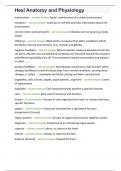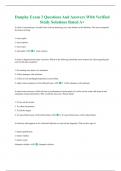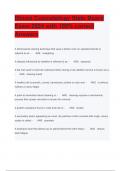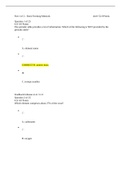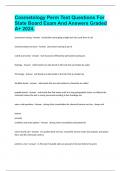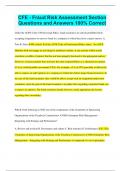Exam (elaborations)
Hesi Anatomy and Physiology 300 questions with 100% verified answers
- Course
- Institution
Hesi Anatomy and Physiology 300 questions with 100% verified answers/Hesi Anatomy and Physiology 300 questions with 100% verified answers/Hesi Anatomy and Physiology 300 questions with 100% verified answers
[Show more]
